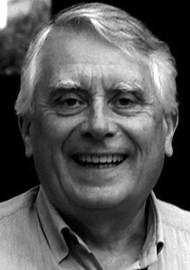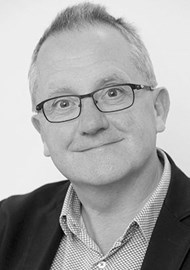Having known Jos for many years, I jumped at the opportunity to catch up with him for our Nov/Dec 2020 series of tinnitus items. My questions reached him during lockdown, and he was enjoying the chance to get on top of his current writing projects.
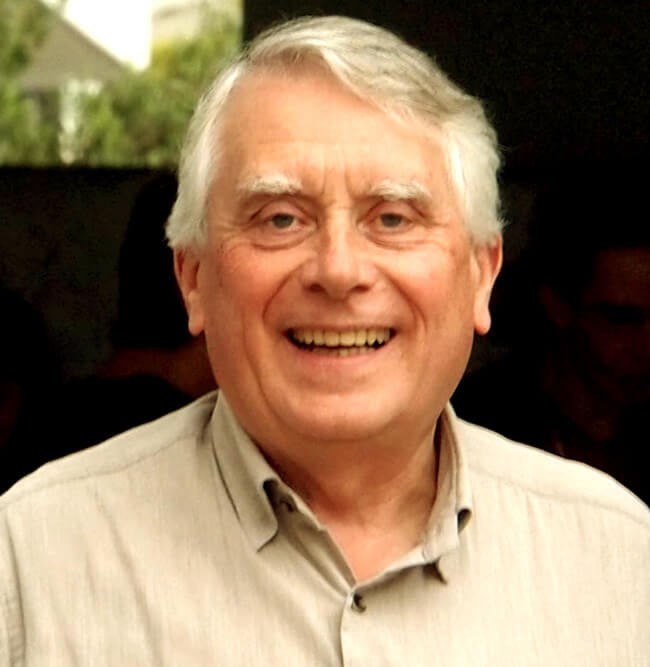
Professor Jos Eggermont.
Hi Jos, how are you finding these strange times?
There are drawbacks of course, but since I have been retired now for seven years, it should and does not make a difference in my dominant pastime, i.e. writing books about hearing and deafness in general. I submitted my latest book, Brain Oscillations, Synchrony and Plasticity: Basic Principles and Application to Auditory-Related Disorders on 1 May, to Academic Press and await the proofs [1]. One other drawback is the ‘COVID pounds’ due to less activity; I used to walk to my emeritus office (courtesy of the University of Calgary) which is on the 14th floor of the Education Tower with a splendid view of the Rocky Mountains. The walk is 30 minutes so, in total, that deprives me of a good one-hour brisk walk a day. In addition, I do not see my colleagues and miss the chats.
Going back to the beginning of your career, I believe that you originally worked in the audiology clinic as a physicist. What inspired you to make the move into research?
You are partially right; I did my PhD work in a lab of the ENT department of the Leiden University Hospital, so that was pure research. I defended my thesis, entitled ‘Time dependent properties of action potentials in the guinea pig cochlea’ in July 1972. One of my ENT friends, Dick Odenthal, noted that this could be applied directly to humans, and so the Leiden version of electrocochleography was born. I did up to 10 ECochGs a week, and you could call this clinical work, but it also had a very large research component - see our Acta Supplement [2]. A little later, I went on a sabbatical leave (1976-77) at the House Ear Institute in Los Angeles to learn ABRs and combine these with ECochGs in the detection of acoustic neuroma. This is where my nearly 40-year collaboration with Manny Don started. Our JASA papers from 1978 and later on derived and narrow-band ABRs are still heavily cited.
So, being educated as a physicist, the move was from pure research to more applied (clinical related) work. The experience in the Leiden ENT Department has had a life-long impact: although I start any new topic with basic research there is frequently a spin-off for clinical audiology.
For many years, tinnitus was a lonely field to research. What are your reflections on how the field has developed, and the research community that has grown?
For me it started at the the second International Tinnitus Symposium (ITS) which was held in New York City in 1983. I was, at that time, still living in the Netherlands and was invited to give a talk about physiological mechanisms of tinnitus. I had never studied tinnitus but had experienced it weekly in transient form, following shooting practice during my military service (1967-68). Thus, I had at least an idea of how it sounded and knew one aetiology and decided to talk about ‘Tinnitus: Some thoughts about its origin’. In hindsight, I made some comments that were relevant. After moving to Calgary in 1986, the first tinnitus conference that I attended was the fourth ITS held in Bordeaux, France, in 1991.
At that time, I was still leaning more toward a peripheral than central origin of tinnitus. However, I became more and more convinced that the locus of tinnitus was in the brain. This may in part have been due to my changing research interest toward adult auditory cortical plasticity which led me to envision tinnitus as ‘maladaptive’ plasticity. We, strengthened by a series of Japanese postdocs, started by studying the effects of systemically applied salicylate on neural activity in cat auditory cortex. We were inspired by earlier studies of Jastreboff and colleagues showing that salicylate causes increased spontaneous firing rates (SFRs) in the inferior colliculus and that this correlated with the presence of tinnitus as deduced from behavioural tests in the same animals. Kentaro Ochi and Mutsumi Kenmochi, my first two postdocs, found a clear dose-related effect of the tinnitus-inducing drug, quinine, on neural correlation strength in cat primary auditory cortex (AI) but very little for salicylate. Salicylate and quinine present a straightforward way of inducing tinnitus in animals and humans, but the cure is to stop taking the drug, so it can hardly be a model for continuous tinnitus in humans.
Masahiko Tomita and Satoshi Seki, and later Arnaud Noreña, started work in my lab on the immediate and late effects of noise exposure. Arnaud found that in the first few hours after a TTS producing exposure there were no changes in the SFRs of cortical neurons, whereas there was immediate increase in neural synchrony. Because tinnitus is present immediately after such exposures (115dB SPL for one hour), at least according to my own experiences, this suggested that increased spontaneous firing rates are not needed for transient tinnitus, but neural synchrony increases potentially are.
A series of conferences promoted by the Tinnitus Research Initiative (TRI) started to focus on the neuroscience aspects of tinnitus that Larry Roberts and I had promoted in a well-cited review in Trends in Neuroscience [3]. There, we reviewed the field of tinnitus research based on our experiences in a multidisciplinary and multicentre Canadian study group on tinnitus that was conceived and meticulously organised by Larry Roberts. Our group combined investigations based on psychoacoustics, human EEG and evoked potential recordings, neural modelling studies, and animal electrophysiology. The group comprised researchers from east (McMaster University, Hamilton) to west (University of Calgary, University of British Columbia) Canada; and met at least once a year, alternating between Hamilton and Vancouver to discuss tinnitus and sample wines from the two corresponding wine regions (Niagara and Okanagan).
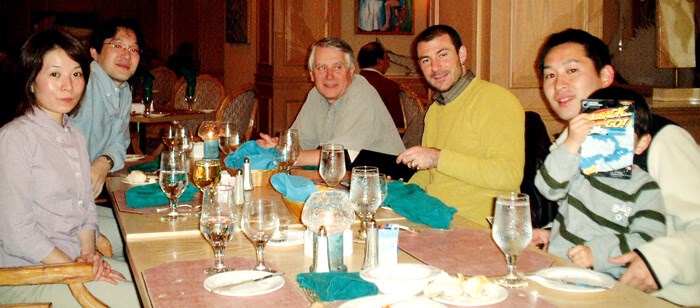
Jos Eggermont enjoying dinner with some of the postdocs from his lab at the 26th Midwinter Research Meeting of the Association for Research in Otolaryngology, Daytona Beach, Florida, USA.
You have authored or co-authored over 230 scientific papers – which is your favourite?
Eggermont JJ, Roberts LE. The neuroscience of tinnitus. Trends Neurosci 2004;27(11):676-82.
Which piece of published auditory research do you wish that you had been involved in?
I have covered a lot of topics in my work: instead of; ECochG, ABR, cortical evoked potentials, animal and human auditory development, diagnosing Meniere’s disease and acoustic neuroma, auditory deprivation and cochlear implants, temporal auditory processing, effects of noise exposure - environmental as well as traumatic - and tinnitus. So what more is there to wish? To be honest, I envied the work on recording single units and local field potentials in auditory cortex of humans with implanted electrodes because of intractable epilepsy, e.g. the work of Kirill Nourski at Iowa University.
In a landmark study, you and Arnaud Noreña demonstrated that an enriched auditory environment following noise exposure could abolish physiological indicators of tinnitus [4]. How did you come up with that idea, and do you think there are clinical opportunities with similar strategies that are yet to be realised?
Arnaud developed the notion that tinnitus is caused by an imbalance between excitatory and inhibitory activity in the central auditory nervous system, resulting from a frequency-specific decrease in spontaneous and driven activity in the auditory nerve fibres following acoustic trauma. Based on all this, we speculated that using an enhanced acoustic environment, such as presenting sounds in the frequency range of the hearing loss, would balance this uneven output of the auditory nerve fibres. We found that post-trauma exposure to the EAE, covering the hearing loss frequency range, for three weeks or more prevented the triad of tonotopic map change, increased SFR, and increased neural synchrony from occurring.
We also found but did not publish - because we had only three animals in that experiment and never followed up on it - that applying an EAE one week after the end of the trauma had no effect. This suggests a critical period for recovery of the neurotoxic aspects of the hearing loss (in the high-frequency region basally from the region of hair cell loss). Potential consequences for post-trauma treatment of tinnitus in humans by tailored auditory environments are that its effectiveness will greatly decrease with time after the onset of tinnitus.
Much of your work has sought to synthesise findings on tinnitus from auditory neuroscience experiments with human experiences. Why do you believe that this is important, and what potential insights can be gleaned?
Ideally, animal experiments might delineate the mechanisms that underlie some forms of tinnitus. This is possible because they use very strict criteria for the agents that putatively induce tinnitus, i.e. salicylate dose or duration and level of noise exposure. We should realise that this always relates to recent tinnitus, within a few days, weeks or months after the induction. Often the noise only produces a TTS, and tinnitus measurements are done after full recovery. Humans who present at clinics typically have long lasting tinnitus and often with unknown aetiology. So that makes it hard to equate animal and human tinnitus.
With the increase in neural imaging we start to know a lot about what is happening in human cortex, and not limited to changes in auditory areas. Again, comorbidities with tinnitus vary a lot and, in my opinion, determine most of the changes in the human brain networks. In contrast, animal research has been dominated by work on subcortical structures. Linking these two realms is still a challenge. For more detail see Eggermont 2016 [5].
Not too long ago you wrote about how electrocochleography (ECochG) has gone in and out of fashion in the 75-plus years since it was first performed, and presently it is in resurgence [6]. Having performed a weekly ECochG clinic with David Moffat and colleagues for over 25 years, this is of great interest to me. What are the new applications of ECochG, and what clinical information can be gleaned?
One of the recent applications is in cochlear implants, either intraoperatively to monitor the implantation or with the implant in situ, using the electrically-evoked compound action potential (eCAP) to test for patency of the electrodes and the induced neural activity in the auditory nerve. This may give insight to the number of nerve fibres that can be activated and their spatial distribution across the spiral ganglion. An interesting second area is the differentiation in various genetic forms of auditory neuropathy by the capacity to record both clear presynaptic (cochlear microphonics and summating potential) and postsynaptic CAP responses. Note that genes underlying two common forms of auditory neuropathy are OTOF, resulting in synaptopathy (presynaptic) and OPA1, resulting in neuropathy of the spiral ganglion dendrites (postsynaptic). ECochG may also be able to better (in addition to using ABRs) characterise noise-exposure induced neuropathy.
Our mutual friend, Larry Roberts, died last year, and I know that you and he were close and did some very influential work together. What do you think will be his lasting legacy?
Yes, I still remember seeing him in great spirits and giving a perfect talk at a hearing loss conference in Niagara-on-the-Lake in early May 2019, just a month before he died. I miss him. Regarding his research, Larry brought residual inhibition of tinnitus to the forefront, always illustrated with application to his own tinnitus. His strength was the linking of behavioural findings in tinnitus patients with their electrophysiological data, and even more important, linking them to animal research as early on reflected in our review [3]. On the more social front, Larry was very skilled and successful in organising symposia (e.g. Society for Neuroscience, ARO and locally) and, of course, our Canadian tinnitus group meetings. He had the uncanny ability to ask the most penetrating questions in such a way that the affected researchers were actually pleased that he debunked some of their cherished opinions.
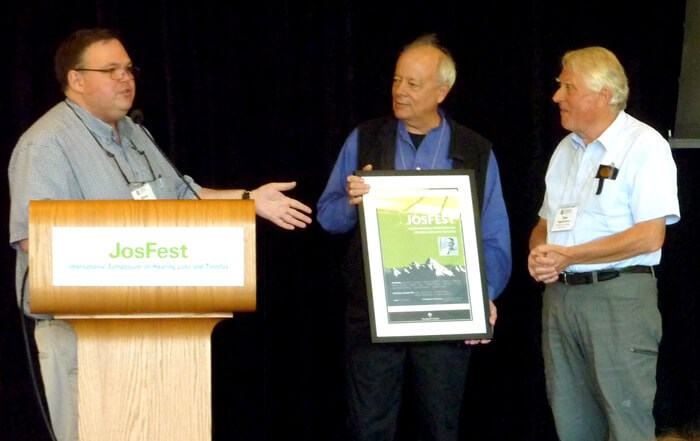
L-R: Steve Lomber (Conference Chair), Larry Roberts (JosFest Chair) and Jos Eggermont at the JosFest Symposium of the 6th International Conference on Auditory Cortex in Banff, Canada, 10 September 2017.
In a recent paper, you postulate that there are separate auditory pathways for the induction and maintenance of tinnitus and hyperacusis [7]. Previously I have noted that clinical experiences of tinnitus and hyperacusis are quite distinct, and that the tendency to link the two symptoms together may not be ideal. Please could you summarise your physiological arguments?
I cite pieces from that paper: if one equates increased SFR with central gain increase - suggesting hyperacusis - and increased burst firing with the potential for tinnitus, there is no clear dichotomy beyond the brainstem. Hearing loss limited to OHC (outer hair cell) damage and high SFR auditory nerve fibres will lead to hyperacusis and potentially not to tinnitus, whereas normal OHCs and IHCs (inner hair cells) but degenerated low- and/or medium SFR ANFs will lead to tinnitus and not to hyperacusis.
Mixed cochlear damage likely leads to both, thereby the increased central gain is making the tinnitus more bothersome in the presence of hyperacusis. It is then possible that the tinnitus and hyperacusis pathways are further determined by specific cell types, although this is not likely in auditory cortex and beyond. The cerebellar pathway appears to modulate or gate the tinnitus percept, whereas the reticular formation is involved in gain control and potentially modulating hyperacusis. The question remains, what does the auditory cortex - as interface between subcortical auditory and central non-auditory regions - do with the activity of these putative subcortical tinnitus and hyperacusis pathways?
What research presently underway on tinnitus most excites you?
The neuroimaging work by Pim van Dijk [8], Sven Vanneste [9] and Fatima Husain [10].
When a person with tinnitus asks you if there will ever be a cure, and when that might be, what do you answer?
Yes, there will be a cure, but that will not be found in the next decade. I always tell them that since aetiologies differ, clinical trials often turn out negative but that there are always some people who benefit, and not only from a placebo effect.
To illustrate this, I here tell my own story. I used to have chronic tinnitus and blame it on my military service, albeit it did not develop until I was in my early 60s. Note the “I used to have”. Being recently diagnosed with high blood pressure, I was suitably provided with a whole cocktail of medications. I noticed that my daytime tinnitus was more or less completely obliterated after I took my medication. Note that it is present when I wake up. This medication regimen includes a calcium blocker, and I recalled that Jastreboff used to put a similar drug into the drinking water for his rats, which abolished tinnitus-related behaviour [11]. I don’t know if there has ever been a clinical trial with that (and it may not be good for everyone).
Having tasted your brilliant cooking, I know that this is a major interest beyond the auditory neuroscience laboratory. How else do you like to spend your leisure time?
It may appeal to your readers to know I wrote about my ‘brilliant cooking’ and my more ordinary scientific life in a recently self-published book: Hear, hear!: A culinary infused autobiography [12]. Lots of recipes, and available through Amazon.
Besides that, I spend my evening hours voraciously reading mystery novels. My favourites are the series by George Simenon, Donna Leon, Andrea Camillieri, and Martin Walker. They all play in France and Italy. Not surprisingly, their main characters like gourmet food and local wine! As a counterweight, I also appreciate the good Scandinavian and Icelandic mysteries where food appears not to be important. I also started rereading Colin Dexter’s excellent Morse series playing in Oxford; more chips and eggs and beer-oriented. In addition, Calgary being close to the wild west, lead me to the famous mystery series by Hillerman (first the father and later the daughter) that plays in the so-called four corners of the American Midwest (Arizona, Colorado, Utah, and New Mexico) the region of many Native American reservations. I call all this time available for reading, one of the benefits of semi-quarantine days!
References
1. Eggermont J. Brain Oscillations, Synchrony and Plasticity: Basic Principles and Application to Auditory-Related Disorders. Academic Press; 2021.
2. Eggermont JJ, Odenthal DW, Schmidt PH, Spoor A. Electrocochleography: Basic Principles and Clinical Application. Acta Otolaryngol Suppl 1974;316:1-84.
3. Eggermont JJ, Roberts LE. The neuroscience of tinnitus. Trends Neurosci 2004;27(11):676-82.
4. Noreña AJ, Eggermont JJ. Enriched acoustic environment after noise trauma reduces hearing loss and prevents cortical map reorganization. J Neurosci 2005;25(3):699-705.
5. Eggermont JJ. Can animal models contribute to understanding tinnitus heterogeneity in humans? Frontiers in Aging Res 2016;8:265.
6. Eggermont JJ. Ups and Downs in 75 Years of Electrocochleography. Front Syst Neurosci 2017;11:2.
7. Eggermont JJ. Separate auditory pathways for the induction and maintenance of tinnitus and hyperacusis? Progress in Brain Research 2020.
8. Langers DM, de Kleine E, van Dijk P. Tinnitus does not require macroscopic tonotopic map reorganization. Front System Neurosci 2012;6:2.
9. Hullfish J, Abenes I, Yoo HB, et al. Frontostriatal network dysfunction as a domain-general mechanism underlying phantom perception. Hum Brain Mapp 2019;40:2241-51.
10. Schmidt SA, Carpenter-Thompson J, Husain FT. Connectivity of precuneus to the default mode and dorsal attention networks: A possible invariant marker of long-term tinnitus. NeuroImage: Clinical 2017;16:196‑204.
11. Jastreboff PJ, Brennan JF, Sasaki CT. Quinine-induced tinnitus in rats. Archive of Otolaryngology Head and Neck Surgery 1991;117:1162-6.
12. Eggermont JJ. Hear, Hear!: A Culinary Infused Autobiography. 2017; Zq Books.


